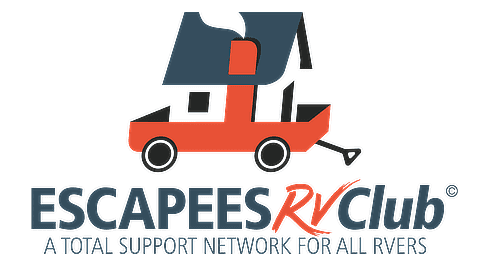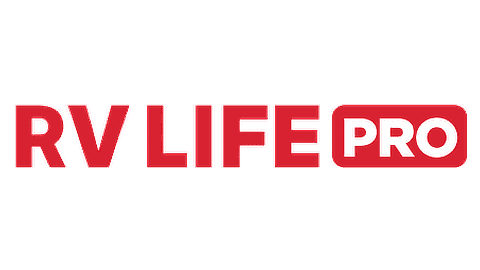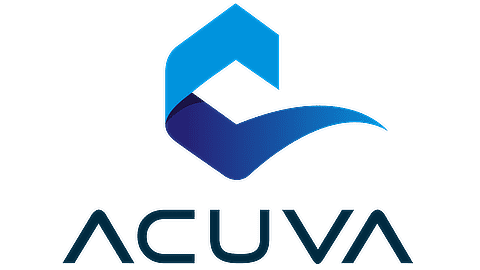How much does it cost to maintain an RV? The answer to this question has lots of variables, of course. But in this post, we’ll cover things you’ll want to consider when buying an RV as you factor in the cost of maintaining that RV.
Is it all worth it? Having lived and traveled the open roads in an RV full-time for more than 20 years, the answer was a resounding “yes” for us. Let’s get into some details to help you answer the question for yourself.
-
1)
How Much Does It Cost to Maintain an RV?
- 1.1) Routine Maintenance/Inspection
- 1.2) Tires
- 1.3) Brakes
- 1.4) Oil Change and Chassis Lubrication
- 1.5) Onboard Generator
- 1.6) Roof/Seal Inspection & Maintenance
- 1.7) Water Heater Flushing
- 1.8) Fresh Water System Sanitizing
- 1.9) RV Refrigerator Maintenance
- 1.10) Winterizing
- 1.11) Batteries
- 1.12) Slideout Maintenance
- 1.13) Motorized RV Maintenance Items
- 1.14) TOAD Maintenance Items
- 2) A Note on RV Maintenance Costs and RV Use
- 3) Is It All Worth It?
- 4) Free RVing Tips, Tricks, Reviews & Giveaways
How Much Does It Cost to Maintain an RV?
Before talking about RV maintenance items that need to be budgeted for, we want to clarify that we’re referring only to costs you may need to consider for routine RV maintenance, not living in, operating, upgrading, or even repairing an RV.
There are, of course, other costs associated with RV ownership, such as fuel, propane, campground and RV park fees, repairs, RV insurance costs, depreciation, wear and tear, storage fees, etc. But today, we’re covering routine maintenance, which is important for keeping RV repair costs down and protecting the value and usefulness of your rig.
It’s also important to note that it’s difficult to provide too many specifics about the cost of maintaining an RV because there is no “typical” RV or RV lifestyle. While some RV owners travel full-time in Class A motorhomes, others take occasional road trips in a travel trailer. The average cost of ownership for just about everything will vary greatly based on fuel costs, gas mileage, rig size, age & condition, equipment level, amount of use, and so much more.
One of the biggest factors in how much it costs to maintain an RV is: Who’s doing the work? This is where DIY RVers can really save a lot of money since labor is usually more expensive than parts. We’ve always handled a lot of our own RV maintenance and have friends who handle virtually all of theirs. The more you’re comfortable doing yourself, the less you’ll spend. So we’ll share as many DIY tips as we can to help you reduce overall RV maintenance costs.
But that comes with a caveat, which is the reason we handled “a lot” of our maintenance vs “all of it.” That’s because it’s important to know the limits of your competence and confidence. While we took care of many maintenance and inspection items ourselves, we always wanted to be sure to get professional eyes on our rig, too. And it paid off many times, when shops found, and fixed, problems we never would have seen. And they got to deal with the huge volume of used oil from our Cummins ISL diesel engine.
What we can say is that the better care you provide your rig in terms of regular maintenance, the less likely you are to get hit with expensive repairs.
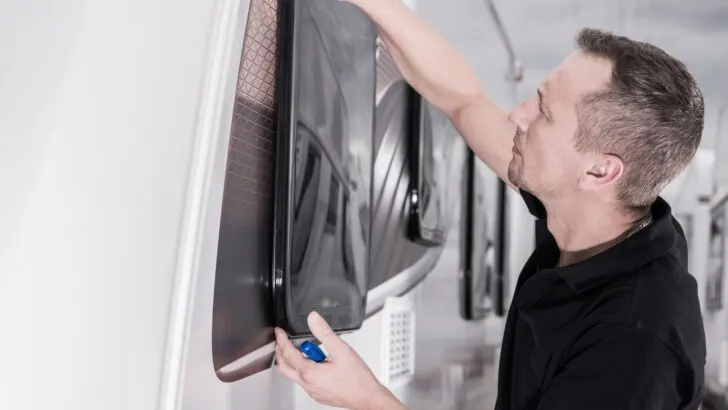
The more thorough we are with regular maintenance on an RV, the less likely we are to get hit with added repair costs.
Routine Maintenance/Inspection
Routine maintenance on an RV is super important. Not only do regular inspections and attention to routine maintenance items contribute to overall safety, but can also affect the overall cost of RV ownership by keeping repair costs down. Leaving a problem to worsen rarely reduces the cost when repairs are eventually required.
Routine maintenance will vary based on the type of RV you have. Motorized RVs are generally the most expensive for obvious reasons. They have engines and transmissions, which are not only expensive to buy, but the care that drivetrains require is often the most expensive part of RV maintenance.
While towable RVs don’t require engine or transmission maintenance, they still have chassis components that require attention, such as brakes, wheel bearings, and suspension. For towable RVs, you’ll also need to consider the routine maintenance of the towing vehicle (although lots of motorhome owners tow a car behind them, which equals two engines and transmissions to maintain).
So, routine maintenance costs can vary a lot based on the type of RV. But whatever type of RV you own, a proactive approach will keep it operating at its best and extend its overall lifespan.
Let’s look at some of the specific maintenance areas and related costs that RV owners face.
Tires
RVs are homes on wheels that rely heavily on their tires to support the load safely. RV tires, subjected to long-distance travel, the weight of the vehicle, and the sun’s damaging UV rays, can each cost between $200 and $1,000 or more per tire to replace. Obviously, the biggest and most expensive tires are those found on large diesel pushers, like our 43′ Newmar. We just replaced 6 of the 8 tires on the Mountain Aire last year, and they are not cheap.
PRO TIP: Use the Escapees tire discount programs to save a lot on your next RV tire purchase. That’s especially important for Big Rig owners, since their tires can be so expensive.
Escapees RV ClubThe Escapees RV Club is one of the oldest, largest, and most loved RV membership organizations in the world. They provide a total support network for all RVers, regardless of their travel style...Show More
The Escapees RV Club is one of the oldest, largest, and most loved RV membership organizations in the world. They provide a total support network for all RVers, regardless of their travel style, type of RV, or experience level.
We're particularly drawn to the Xscapers group, which is a community within the Escapees RV Club that was created specifically for working-aged RVers.
All in all, Escapees membership offers a lot of valuable resources… and, if you join using our link, we’re donating 100% of our affiliate proceeds to the Escapees C.A.R.E Center, a 501(c)(3) nonprofit corporation that provides a safe haven (with professional assistance at affordable prices) for members whose travels are permanently ended because of age, or temporarily interrupted because of health problems.
So if you're not already a member, please join today!
Show Less
For towable RVs, you’ll likely need to replace from 2 to 6 tires (depending on the RV), usually about every 5 years. For motorhomes, you’ll probably be replacing between 4 and 8 tires every 5 to 10 years. There are many factors that affect how long a tire will last. We covered many of those factors in our video Tire Age, Care & Replacement:
Unsure how to properly maintain your RV’s tires, including how to figure out the correct pressure settings? We’ve got you covered…
We wrote a book all about this somewhat complicated topic: How To Inflate RV Tires Correctly! Our book is free for subscribers of this blog, TheRVgeeks.com. If you haven’t already signed up to receive our helpful daily RVing newsletters (chock full of great articles! 😄), be sure to subscribe here for FREE access to our eBook. If you’re already a subscriber but can’t locate your link to the book, simply re-subscribe using the same email address that our newsletters come in to (you won’t be double subscribed).
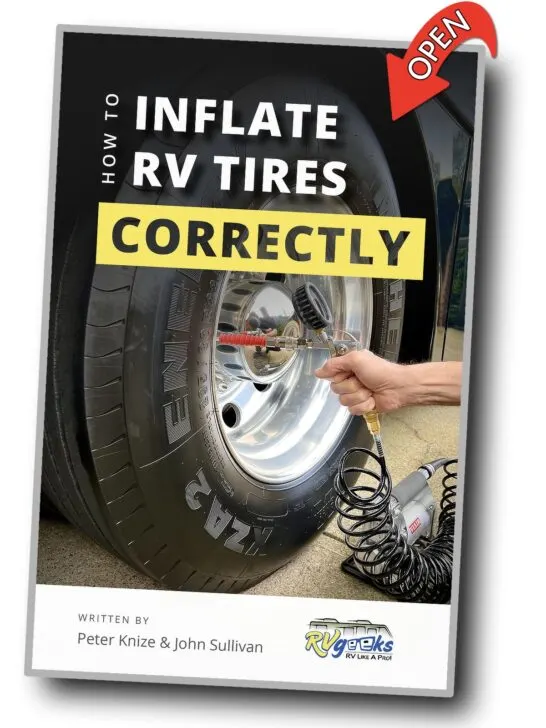
To access our eBook, subscribe to our blog by clicking on the image above and completing the sign-up. (If you’re already a subscriber, don’t worry — you won’t be double-subscribed if you use the same email address where you already receive our newsletters).
Brakes
Brakes provide an excellent example of how waiting to perform routine inspections and maintenance can increase the overall cost. That’s because the cost of replacing brake pads/shoes alone will be a lot less than having to include new drums/rotors in the job. And drums/rotors will be less likely to require replacement if the pads haven’t been allowed to wear down so much that they damage them.
Brake maintenance and replacement costs can vary extremely widely. A single-axle trailer may run just a few hundred dollars to replace its two sets of brake pads. A diesel pusher may run into the thousands to service all the brakes. The reason there’s such a wide range is due to several factors: the number of wheels/brakes, the type and size of brake components, and exactly what needs to be replaced.
A tag axle diesel pusher requiring new shoes and drums at all eight of its wheel positions would almost certainly be the most expensive brake maintenance by far. The good news is that there are ways to reduce brake costs through your own actions. We owned our Mountain Aire for 18 years, putting about 113,000 miles on it during that time, and never once had to replace a single brake pad or drum.
How did we do that? Of course, it wasn’t done by neglecting them. We had our entire chassis, including the brakes, professionally inspected each year. But we did something else that reduces brake wear substantially. We always drove defensively. That includes 1) Allowing the proper following distance between us and the vehicle in front of us (4 seconds minimum during dry daylight conditions), 2) Looking far ahead into the distance for situations that might require braking, and 3) Using our engine brake.
As a result, we can honestly say that in all our years on the road, we never once had to make a panic stop in our motorhome. We’re not saying that a situation can come up requiring even the best defensive driver to have no choice other than to slam on the brakes. But being in the routine habit of leaving yourself substantial space to see, process, and react to traffic and road conditions means that hard braking should be an extreme rarity, at the very least.
This will keep your passengers more comfortable, your dishes from flying out of the kitchen cabinets, keep you and everyone else on the road safer, and save wear on your expensive brakes. Treating your brakes gently, combined with routine inspections of braking components, is helpful for both safety and financial planning.
PRO TIP: Use the RV LIFE Maintenance Tracker to keep track of your RV’s maintenance records. It will not only keep track of what’s been done, but what’s due and when. Use the RVGEEKS discount code to save 25% on an RV LIfe PRO membership. It includes not only their Maintenance Tracker, but an entire suite of useful tools for every RVer.
SAVE 25%RV Life Pro 25% DiscountRV Life Pro membership provides access to a suite of valuable tools (each one separately worth the cost of the whole package), including: RV Trip Wizard (trip planner); RV Safe GPS app (for...Show More
RV Life Pro membership provides access to a suite of valuable tools (each one separately worth the cost of the whole package), including: RV Trip Wizard (trip planner); RV Safe GPS app (for RV-specific navigation); CampgroundReviews.com (user reviews of RV Parks & campgrounds); iRV2.com (community forums); RV Life Maintenance Tracker (maintenance schedule tracking), and RV Masterclass (excellent educational material for all RVers).
Read Our Post All About The RV Life App
Save 25% on your first annual subscription to RV Life PRO by clicking the button. The discount will be applied when you click through to the payment page. Show Less
An RV Life PRO membership includes their excellent maintenance tracker plus a range of other great benefits. You’ll get a 25% discount on your first annual subscription by clicking here.
Oil Change and Chassis Lubrication
Obviously, an oil change is something that only motorhomes need to be concerned with, not towables. Of course, a towable requires a motorized vehicle to pull it, but since a pickup truck or SUV isn’t generally an RV, we’ll assume that you have your oil change regimen covered, either as a DIY project or at a local dealer or quick oil change location.
If you have a towable RV, you’ll still need to maintain the lubrication of wheel bearings, suspension, stabilizer jacks, and hitch components. As with just about everything on a motorized RV vs a towable, there’s more to do on motorhomes. Routine lubrication of hubs, suspension, (more than on a towable), and steering & brake components is required.
Chassis lubrication is one of our favorite jobs to leave for the pros. There are many reasons for that. It’s not that it’s so difficult, but it does require access under the rig. It’s pretty accessible down there on a travel trailer. But a motorhome can be a lot more difficult to reach the lubrication points, and there are a lot more of them — so many, that it can be easy to miss some.
We also leave RV chassis lubrication to the pros for two other reasons, especially with a motorhome: 1) Many RV shops have specials that include an oil change, lube, and chassis inspections as a package deal at a reasonable price. Not only does this help keep the cost down (often as low as several hundred dollars), but the inspections they perform get those “professional eyes” we mentioned earlier onto our rig. And their lifts or pits make it SO much easier to get underneath the rig.
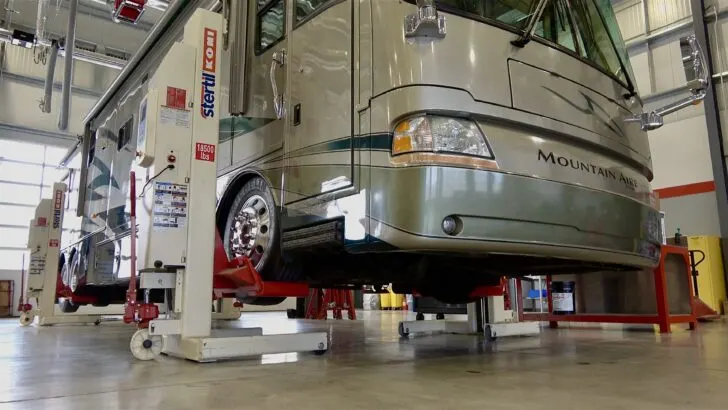
This is our 2005 Mountain Aire on lifts at a Cummins Coach Care shop. The combination of easier access and professional inspections and work are reasons we did a lot of our own RV maintenance… but not all of it.
For a 1-stop LOF (lube/oil/filter) location for diesel pushers, we used to be big fans of Speedco. They had one of the best Big Rig oil change deals around. No appointment needed, long hours, and unbeatable pricing. We used to get a complete chassis lube, engine oil & filter change, both fuel filters replaced, and even oil analysis done, all for about $200-$250. We stopped going there when another large company bought them, and the prices skyrocketed.
These days, a visit to a top-notch RV shop for an LOF runs more like $500+ for a diesel pusher. We still like Cummins Coach Care because we had a Cummins-equipped RV, and they were the most qualified pros to take care of our expensive diesel engine for us. They also have special equipment and training to handle motorhomes, not just trucks.
Onboard Generator
If you have a built-in generator on your motorhome or your towable RV, you’ll need to consider maintenance costs associated with it as well. Even if you carry a portable generator on your RV, in addition to the cost of fuel and oil, you’ll need to change the oil and replace the oil, fuel, and air filters.
While a trip to a shop may run several hundred dollars for routine maintenance (depending on which items are due), we did 100% of our own generator maintenance on our Onan 7.5 kW QuietDiesel over the entire 18+ years we owned our Mountain Aire. If you’d like to do yours yourself, too, here are links to the videos we made to show you how:
- Onan Generator Maintenance — Oil Change, Air Filter Replacement & Spark Arrestor Cleaning
- Onan Generator Coolant Change
- Onan Generator Fuel Filter Replacement
Many of the following maintenance tasks are super easy and cost almost nothing, making them excellent DIY projects. Actually, most are the type of things that we think every RV owner should learn to do. For example, we doubt that many RVers should need to take their rig to a shop to have the fresh water tank sanitized, or the water heater flushed.
Roof/Seal Inspection & Maintenance
The cost of keeping your roof sealants in good shape is negligible, but the cost of not keeping your seals in good shape could be huge! Roof inspection and sealant touch-up is a task we’ve always done ourselves. Even if you’re not a DIY RVer in most cases, as long as you’re comfortable climbing onto the roof, a little time spent twice a year, and the few bucks it costs for a tube of Dicor, you can save yourself from potentially major water damage repairs.
For much more on this topic, see our post on Dicor RV roof sealant.
- RV ROOFING USE: Lap sealant is sun-ray stabilized to avoid spoiling and discoloration; Plus, it will not stain or discolor any roofing material to...
- COLOR: White hue for stylish and beautiful RV roof
While you’re picking up some Dicor, get yourself this awesome Red Devil caulk gun. Those cheapo caulk guns aren’t worth bothering with, and we absolutely love this one.
- 26:1 THRUST RATIO: 950 pounds of force easily extrudes the thickest of materials
- COMFORTABLE GRIP: Ergonomic rubber trigger and push release
Water Heater Flushing
There’s very little cost to flush your RV water heater, other than some white vinegar and potentially the replacement of the anode rod (if you have a Suburban water heater). This important piece of annual maintenance may be inexpensive and easy, but it can help prolong your water heater’s lifespan. Since they’re not that cheap to replace, the longer they last, the better.
This is a classic DIY maintenance task that every RVer should know how to do. For much more information, see our post on the water heater flush and inspection process. For anyone who’d like a visual tutorial on the process (including a borescope inspection), here’s our video showing how to do it:
Fresh Water System Sanitizing
Again, while sanitizing your RV water system is an important annual or semi-annual RV maintenance item, the only real cost is time (and a little bleach). We hate buying, hauling, and storing bottles of water, not to mention all the plastic waste. Sanitizing the fresh water tank in both of our motorhomes (our ’02 Bounder Diesel and our ’05 Newmar), allowed us to safely drink from the fresh tank for years.
That is until we discovered Acuva LED water purifiers. We still sanitized the fresh tank… but a lot less often. We like ours so much, that we’ve arranged a special discount for you. Click the link below and use the code RVGEEKS to save 10% on any Acuva system.
Ditch the bottled water! Major cities sanitize their drinking water using ultraviolet light, and now you can, too. Acuva’s UV-LED system makes water safe to drink, using a fraction of the space...Show More
Ditch the bottled water! Major cities sanitize their drinking water using ultraviolet light, and now you can, too. Acuva’s UV-LED system makes water safe to drink, using a fraction of the space and power… perfect for RVs.
Check out our Acuva installation video here
Get 10% off any Acuva system when shopping online at Acuva's website and using the discount code listed here.
Show LessRV Refrigerator Maintenance
The maintenance of your RV refrigerator is another routine task that can essentially cost nothing. This process includes cleaning and inspecting the burner, flue, and condenser coils to ensure proper operation and efficiency. If you have this done by a professional, it will likely run anywhere from $250-$500.
To help you decide what you can do on your own to save some money, be sure to check out our RV refrigerator maintenance tips.
Winterizing
With the winterizing of an RV, we’re looking at minimal cost for antifreeze and an hour or two of your time. Of course, if you have a compressor already, it will cost even less, since you can blow the water lines out using air pressure (our preferred method by far).
Check out our post (and the included video) showing how to winterize an RV with an air compressor. For even more information, see our post on RV winterizing tips to help you avoid common mistakes.
Batteries
Routine battery maintenance is primarily a requirement for flooded lead-acid batteries and is another typical DIY job for most RVers. There’s very little cost other than a battery hydrometer, distilled water, and corrosion-inhibiting battery spray. Maintaining your batteries properly can save a lot since replacing them can be a lot more expensive. So you’ll want to make the effort to prolong their useful lifespan.
While running an equalize cycle is most commonly thought of as only being for flooded lead-acid batteries, AGM (Absorbed Glass Mat) batteries can benefit from equalizing as well. Here’s our video showing how we maintained our old flooded lead-acid batteries (before we upgraded to lithium):
Slideout Maintenance
Slideout maintenance involves cleaning & maintaining seals and lubricating the slide’s extend/retract mechanism. To maintain your slide-out seals yourself for free, see our post on how to care for RV slide-out seals, where we use a surprisingly simple method to preserve the rubber seals. We learned it from Newmar, and it must work, because even with four slide-outs, we never had to replace a single seal in over 18 years.
Motorized RV Maintenance Items
As mentioned, if you’ve got a motorhome, you have additional maintenance to consider, including any vehicle you tow behind you. If you have a towable rig, you’ll have to maintain the tow vehicle and towing equipment, too. More on that below.
To summarize, the following are the primary maintenance items that may need to be figured into the cost of maintaining a motorized rig. Prices for each of these items vary widely depending on the year, size, and type of motorhome, where you’re having the work done, and in what part of the country. Luckily, many of the most common annual maintenance items are often included in package deals, like the LOF mentioned above. Items on the list may include:
- Engine/drivetrain/chassis maintenance
- Oil & filter change
- Coolant service
- Fuel filters
- Transmission fluid & filters
- Air system desiccant cartridge replacement (diesels)
- Air cleaner replacement
- Belts & hoses (inspection & replacement)
- Engine battery/batteries
- Diesel emissions components
- Ride height inspection and adjustment (diesels)
- Hub and differential oil
- Brakes
TOAD Maintenance Items
If you tow a second vehicle behind your motorhome, there are maintenance costs to consider there as well.
Dolly Towing
For dolly towing, additional maintenance items will include:
- Two additional tires
- Two additional brakes
- Suspension lubrication
Flat Towing
If you’re flat towing, you’re adding incremental extra wear to the towed car’s tires, brakes, and suspension, and you also need to add in the costs of maintenance (lubrication, etc.) of the towbar.
A Note on RV Maintenance Costs and RV Use
When considering and planning for RV maintenance costs, it’s important to note that how you use your RV will also have an impact. For example, full-timers may have higher costs anywhere they travel because many engine/chassis maintenance items are based on either time or miles/hours, whichever comes first. They may also save money by having maintenance done when they’re in a less expensive part of the world.
As a reference, this video will give you a sense of the 30,000-mile motorhome maintenance cost from a couple of fellow full-time RVers:
So, driving your RV a lot can drive up your maintenance costs. But while occasional vacationers or weekend RVers won’t have that issue, they may encounter additional costs associated with the lack of use of the rig, such as tire rot, dead batteries, rust, etc.
Is It All Worth It?
It is all worth it if you use your RV to enhance your life with travel and memories you can’t make any other way. Also, RV travel can be significantly cheaper for family vacations when compared with other vacation options that may include the costs of flights, hotels, car rentals, restaurants, etc.
We hope this article helps those considering RVing to step into it with eyes wide open to the various maintenance items that RVers need to keep up with. Just like owning a house, boat, plane, or other substantial type of equipment, care is required to get the most out of your ownership experience. We don’t want you to be surprised by some of the expenses associated with the many joys of RVing.
Free RVing Tips, Tricks, Reviews & Giveaways
As 20-year full-timers, we share everything we’ve learned about RVing over the years. Join our online community to receive a wealth of great RVing knowledge delivered daily to your inbox.
Whether you’re a new RVer or a seasoned full-timer, you’ll love the wide range of RVing topics we cover. Don’t miss a single article or any of our famous Giveaways. Subscribe to our newsletter today!


